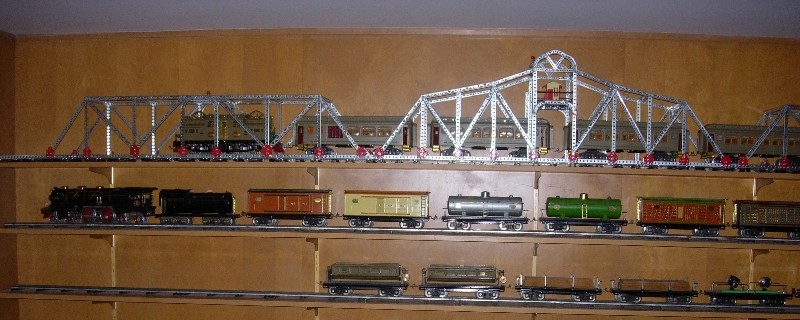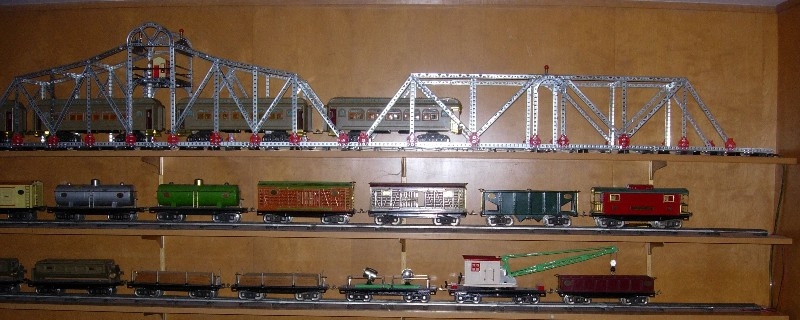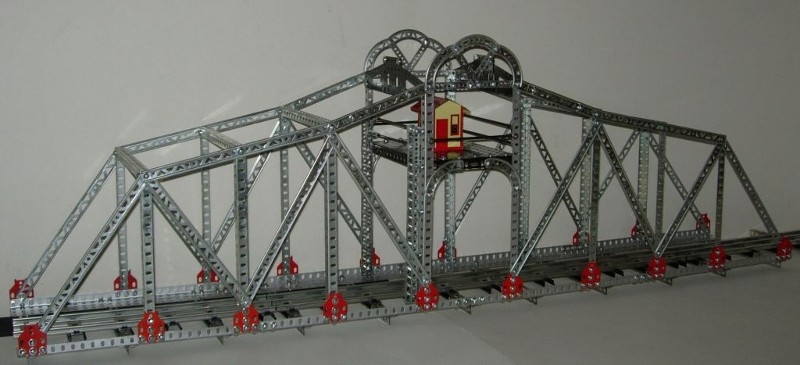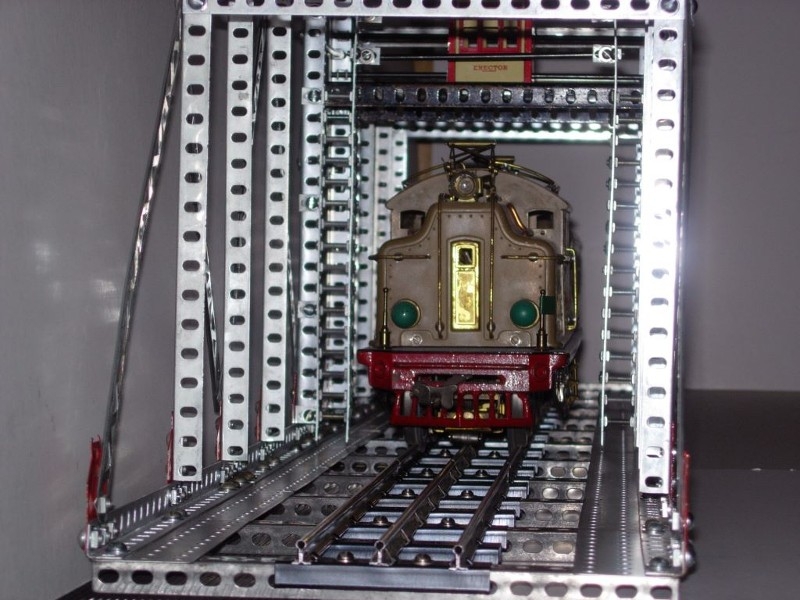Charlie writes: This 3-section bridge occupies a 14 foot shelf in my den. This photo shows the left side of it. I was not able to get all of it in one picture! The bridge is built to a scale of about 27 to 1 for Lionel Standard (2 1/8”) Gauge track, making it about 350 scale feet long. The trains in the picture are Lionel Standard Gauge trains of 1927-1941 vintage. The train in the bridge is a passenger train pulled by a Lionel 408E electric form loco. All of the trains you see in these photos are original and in running condition.
Here is the right-hand side of the bridge. As one can see from these photos, the bridge is built in three separate but contiguous sections which are screwed down to the shelf. The track can be electrified (I’ve run the big 408E back and forth a couple of times on it!). Each bridge section is equipped with red obstruction lights and the little house in the middle of the center section is also lighted. The model contains about 30 feet of wiring. The actual model is about 13 feet long overall and 8 1/2” (17 holes) wide. It contains 121 angle girders, most of them are 17 holes long. An earlier single-span version was built 10 1/2” (21 holes) wide for a two-track O gauge main line.
Here is a photo of the center section. Its design was inspired by another Erector bridge I saw in the Eli Whitney Museum in New Haven, CT several years ago. In this photo, the lighting and wiring have not been installed yet. Most of the construction details should be apparent in this and the next photo. Flat car trucks MV are used as gusset plates. The vertical angle girders on the sides are 17, 19, 21 and 25 holes long. A few of the diagonal girders C had to be shortened a bit to fit correctly. The whole bridge will require 121 angle girders, most of which are 17 holes or longer, 60 MV’s, 60 C girders and 60 flat plates MF.
The house is mounted on two previously re-painted base plates S that have been cut down to 17 holes long. The railings are axle rods attached with collars P37 and set screws, with thin No. 6 washers added under the heads to tighten them up. The access ladders (one on each side) are each made from two 41 hole strips J, sixteen 7/8” screws S62 and nuts as required, and attached with angle brackets CH.
Better DUCK or that 408E will run over you! This photo shows the construction of the bridge base. The track ties are centered and bolted to 17 hole angle girders as cross pieces. If you use Lionel or MTH track, you can do this with 6-32 bolts and nuts without “moving” any holes. The sides of the base are DP or other angle girders laid end to end and bolted to the ends of the cross pieces. MF flat plates form a catwalk on each side. Narrow perforated strips G join and strengthen the angle girders where they are abutted. Some track ties may have to be adjusted slightly so they are spaced an exact multiple of 1/2”. This method of construction is used in all three bridge sections. I strongly recommend the use of the THICK N-21 nuts – the thin ones will strip very easily. Also, avoid aluminum screws.




